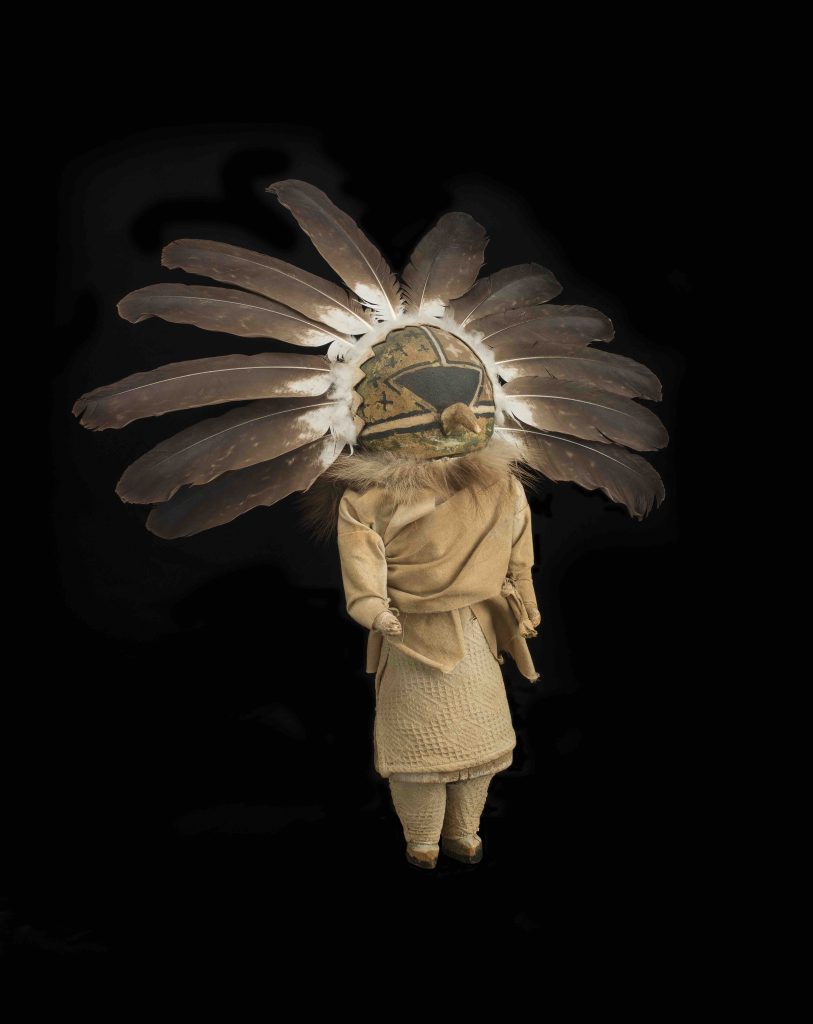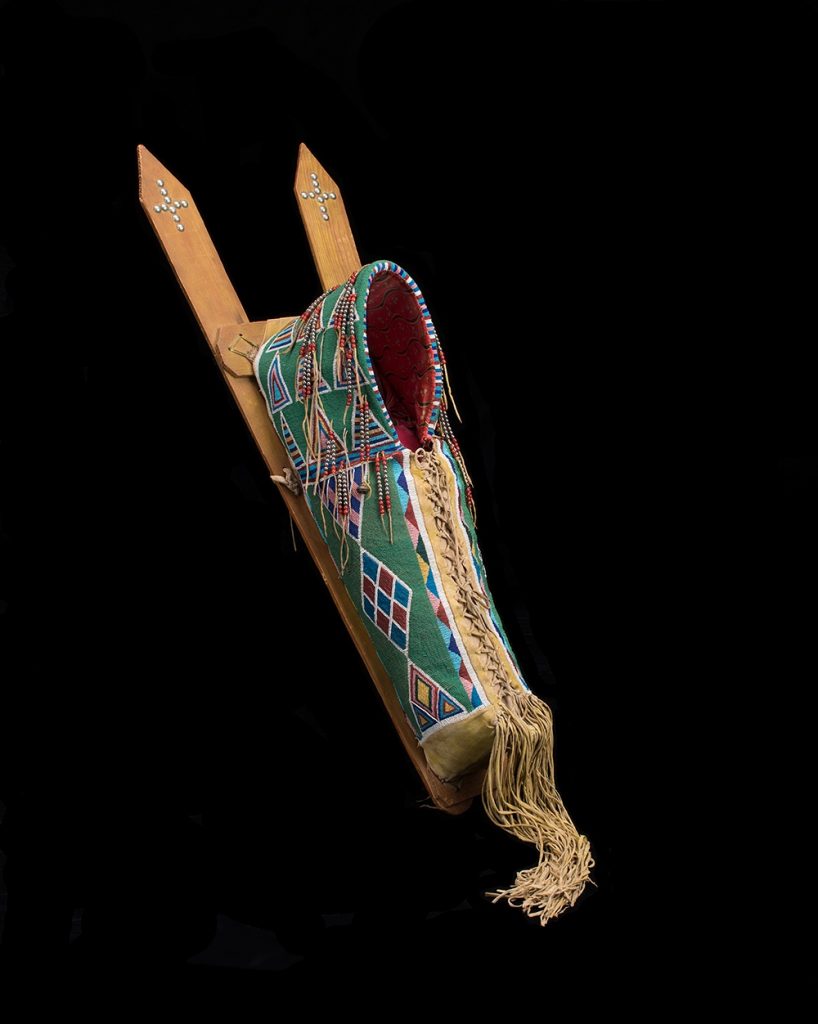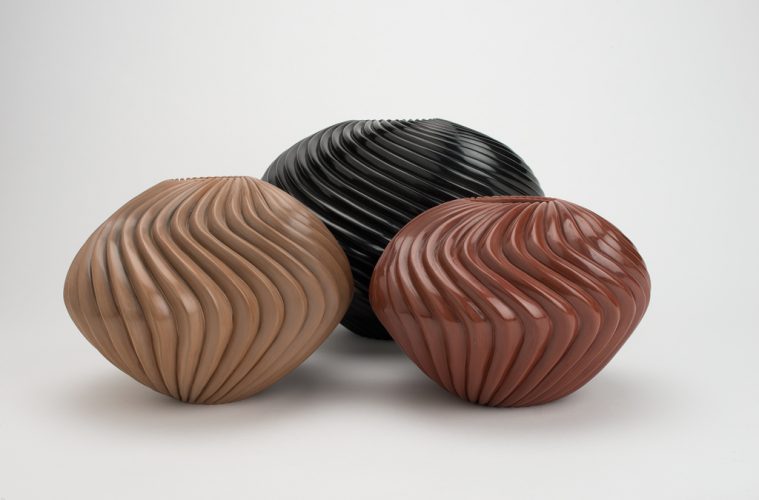
The impression many people have about viewing Native American works in a museum is that they are looking at artifacts—relics from the past that anthropologists find interesting because they tell about domestic life. But some items, ancient and modern, transcend utility and evoke a greater purpose than merely to be hurled through the air, filled with food or traded as a commodity. Some pieces were created with the purpose, by their very existence, to inspire a spark of joy, to incite a sense of awe and to be treasured for transcending their own physicality.
Thus the creatives at the Heard Museum have cultivated the theme for a new exhibit, “Beauty Speaks for Us,” putting on view some of the “best of the best” Native American artworks from around the Valley and beyond.
The idea came from museum director David Roche in conversation with some of the curators, explains Caesar Chavez, the museum’s director of creative and marketing. Chavez explains that this exhibit is very aesthetically driven, more so than most major exhibitions at the Heard. “It’s a show that is not necessarily telling a narrative. There is no beginning, middle or end,” Chavez says. Visitors are asked to take a closer look and deeply consider what they see.
“One of the big ideas behind this exhibit is to teach people how to look at this art—American Indian art,” Chavez says. “That is a key message.”
Chavez cites, as an example, the image selected for the cover of the exhibition catalog. The photo appears to have the viewer looking into a highly stylized eyeball. Rich sorrel edges fold into a center that looks like a pupil. But this isn’t an eye, Chavez explains: it’s a ceramic piece called a melon bowl pot. The object viewed from a particular angle appears to become something else.
“Beauty Speaks for Us” draws its more than 200 pieces from three sources. The exhibit pulls primarily from the Heard Museum’s permanent collection, but also from the private collections of two guest curators, Janis Lyon and Carol Ann Mackay. The highlights include masterworks of Native American jewelry, pottery and weaving.

Several of the rugs on display are impressively large. “Cowboy Serape,” featured in the catalog, is 80 inches by 90 inches and was produced around the turn of the 19th century. Another rug from the Mackay collection is enormous, spanning 137 inches by 134 inches (about 11 feet by 11 feet).
Southwestern textile enthusiasts will recognize work by Navajo weaver D.Y. Begay. According to Chavez, many of her textiles are landscape inspired, including “Study in Cochineal.” This piece layers rich reds and earth tones, creating a horizon line in the middle that produces the effect of a deep desert sunset. Begay lives in Santa Fe now but maintains an Arizona connection to the Navajo reservation.
David Roche has been director at the Heard Museum for just over a year. He says that planning for the “Beauty” exhibit began around the time that he started. But first, the museum would undergo a massive remodeling project.
The Heard Museum received a grant from the Virginia C. Piper Charitable Trust and laid plans to combine two previous gallery spaces into an open floor plan with more than 6,500 square feet, as well as to install a walkway that would finally connect the upstairs Berlin Mezzanine to the galleries on the south end of the second floor. The new combined space is aptly dubbed the Grand Gallery. Major construction started in May 2016. “It’s a blur. Really, it’s remarkable how quickly this has come together,” Roche says.
Roche explains that there were many challenges along the way during the renovation. “As you might imagine, when you are dealing with this much history, there will be some surprises. There were actually 33 latent issues or conditions that had to be addressed.”
“Beauty Speaks for Us” will be the inaugural exhibition in the Virginia C. Piper Charitable Trust Grand Gallery. The remodeling project took about a year from planning to completion, and the final touches wrapped up just in time for the installation and opening of the “Beauty” exhibit.
“We feel that we’re in a much better place, for a lot of reasons,” Roche says. “But really what we are most excited about is the opportunity that this new gallery presents for us.”

“Beauty Speaks for Us”
Virginia C. Piper Charitable Trust Grand Gallery
Heard Museum
February 11 through April 2
www.heard.org
A limited-edition catalog of the exhibition is available.
Image Credits, photos Craig Smith:
Nancy Youngblood, Santa Clara Pueblo, b. 1955
Melon bowl, 2001, Ceramic, 6 x 8 inches
Collection of Janis and Dennis Lyon
Nancy Youngblood
Melon bowl with 32 ribs, 2001, Ceramic, 8 x 11 inches
Collection of Nadine Basha
Nancy Youngblood
Melon bowl, 1998,Ceramic, 6.5 x 8.5 inches
Collection of Janis and Dennis Lyon
Hopi Ahöla, early 1900s
Cottonwood root, paint, kaolin, feathers, cloth
24 x 26 x 7 inches
Gift of Senator Barry M. Goldwater
Underwritten by Anonymous
Kiowa Dress, c. 1880
Hide, paint, glass beads, cowrie shells. horsehair, metal,
brass beads, silk ribbon, 54 x 31 inches
Fred Harvey Fine Arts Collection at the Heard Museum
Kiowa Lattice cradle, c. 1890
Hide, canvas, cotton cloth, glass and metal beads,
wood, silver tacks,brass bell, 42.5 x 26.8 x 9.5 inches
Fred Harvey Fine Arts Collection at the Heard Museum

